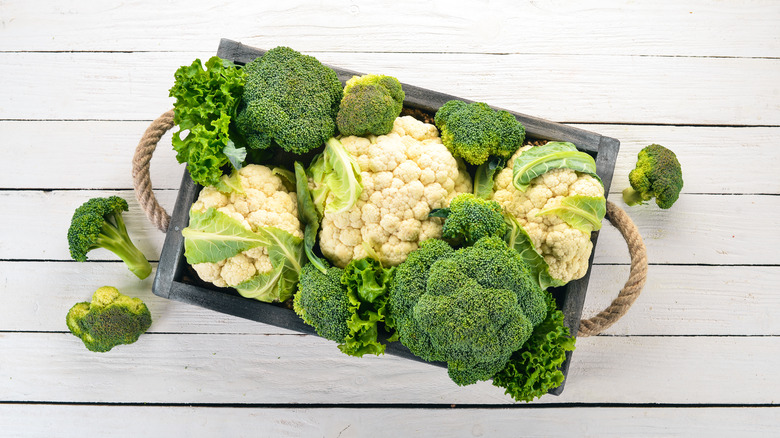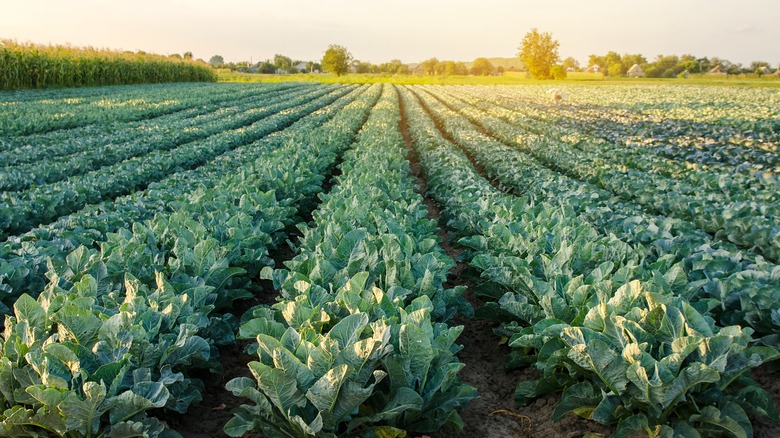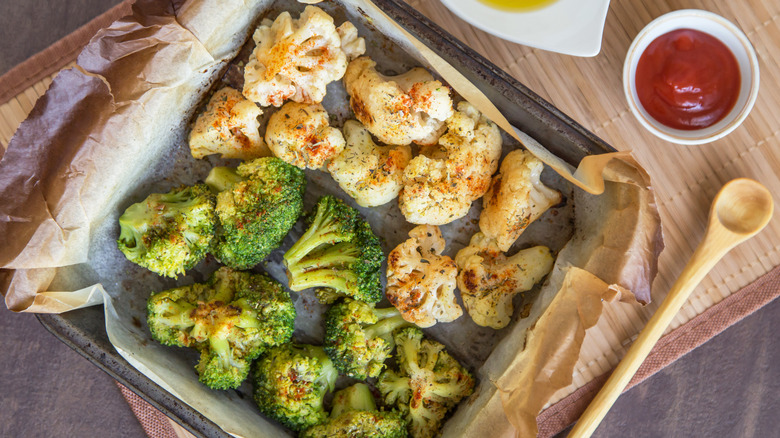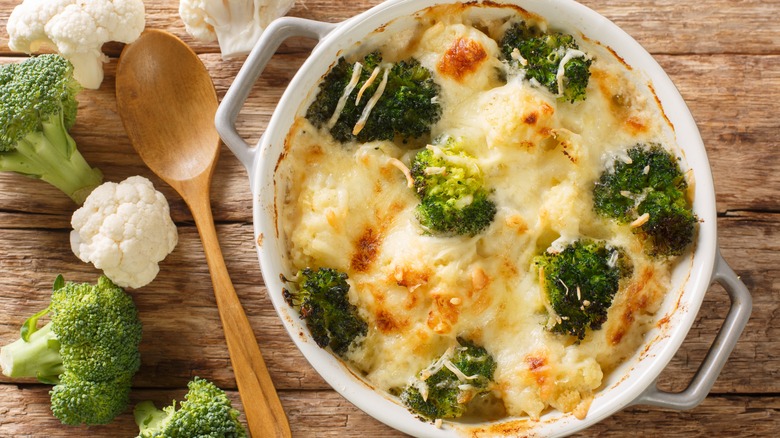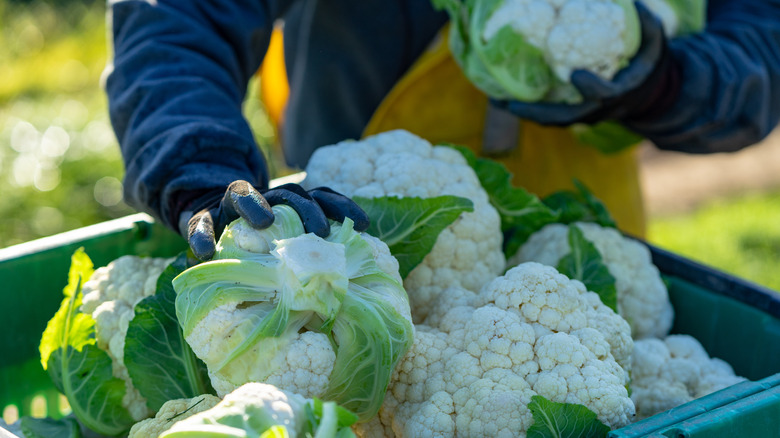Most Of The World's Broccoli And Cauliflower Comes From This Country
Often found together in frozen vegetable mixes, broccoli and cauliflower go together like another veggie paring, peas and carrots. You can find the two cruciferous vegetables together in grocery stores, on salad buffets, and on restaurant menus. Other members of this plant family are radishes, turnips, Brussels sprouts, and kale. When grown, broccoli and cauliflower closely resemble each other and are both harvested when their flower heads are full of buds that haven't yet bloomed into flowers.
While the heads and stems of broccoli and cauliflower are edible, dividing them into large or small florets is common, and Bowl of Deliciousness says these smaller pieces are a good addition to salads, for dipping, and other recipes. But don't think you need to always feature these veggies together. There are countless recipes that feature them separately from simple steamed broccoli to Asian dishes like this General Tso's Cauliflower and classic beef and broccoli.
Enjoyed for centuries
Both broccoli and cauliflower have been enjoyed for centuries. First grown in the Mediterranean, according to The Spruce Eats, broccoli comes from the Latin word, brachium, which translates to "arm, branch, or shoot," and is reflective of the vegetable's tree-like appearance. While the Mediterranean region has enjoyed broccoli for hundreds of years, it wasn't widely consumed until about the 1700s when it was brought to England. Not long after, President Thomas Jefferson began to grow broccoli in his garden in the late 18th century, but it took much longer for broccoli to be widely embraced by Americans. The vegetable finally caught on in the 1920s as Italians brought their cuisine to the U.S.
Also in an attempt to describe the vegetable, the Latin name for cauliflower is a mix of caulis, meaning "cabbage" and floris, meaning "flower," according to Almanac. Also native to the Mediterranean region, in Cyprus, this veggie became popular in Europe in the 1500s, according to Food Gardening Network. And about a century later, it was first grown in the Americas.
Full of nurtitional value
When it comes to choosing broccoli or cauliflower for their health benefits, you can't go wrong with either as both are extremely nutritious. Broccoli and cauliflower are known to contain many antioxidants, according to Healthline, and are full of fiber. Antioxidants have been shown to reduce inflammation and cell damage and may even help to guard against the development of certain cancers.
For a low-calorie, high-protein food option, broccoli is a good pick. One cup of chopped raw broccoli has 31 calories and 2.4 grams of fiber, according to the USDA. It's is also extremely rich in vitamins and minerals, containing calcium, iron, magnesium, potassium, and vitamin C.
Healthline lists many of the same benefits for cauliflower, including vitamins C and K, potassium, folate, and magnesium. Not to be outdone, a cup of raw cauliflower has 25 calories and 3 grams of fiber. High-fiber diets have many benefits for the body, such as helping to maintain a healthy gut flora, and reducing the risk of heart disease, cancer, and diabetes.
Increasing popularity
Based on these health benefits, it's no surprise that both broccoli and cauliflower are widely popular in the U.S. In a 2022 Green Giant poll, broccoli was voted 29 states' favorite vegetable. Not only is broccoli a for many, it's also consumed in great numbers. According to The Spruce Eats, the amount of broccoli eaten in the past 30 years has increased three-fold.
While broccoli may, for the moment, have cauliflower beat as America's favorite vegetable, in recent years, its popularity has also exploded, says Time. Its increased appeal can be credited to the many ways in which it can be incorporated into different dishes and cuisines. Additionally, people searching for satisfying meat alternatives or low-carb options also land on cauliflower. Time reported that in 2012, American farmers sold $239 million of cauliflower, a number that just four years later increased to roughly $390 million.
Who grows the most
By far, the two countries that cultivate the most cauliflower and broccoli are China and India. According to data from the Food and Agriculture Organization of the United Nations, mainland China grew roughly 9.5 million metric tons of the two vegetables combined in 2020. Not far behind, India produced 8.8 million metric tons in the same year. In a distant third, the U.S. grew roughly 1.3 million metric tons.
In the past five years, China has increased the amount of cauliflower and broccoli it is cultivating and has seen positive economic results, reports World Atlas. It's estimated that in this time, the amount of these vegetables grown in China has gone up about 20%. The main importers of Chinese broccoli and cauliflower are other Asian countries: Malaysia, Thailand, Hong Kong, Vietnam, and Singapore (via Selina Wamucii).
The next time you are making dinner, and you want to include healthy broccoli or cauliflower, there's no need to choose because countless stir frys and casseroles are happy to include both (via Delish). Perhaps there isn't too much of a good thing.
